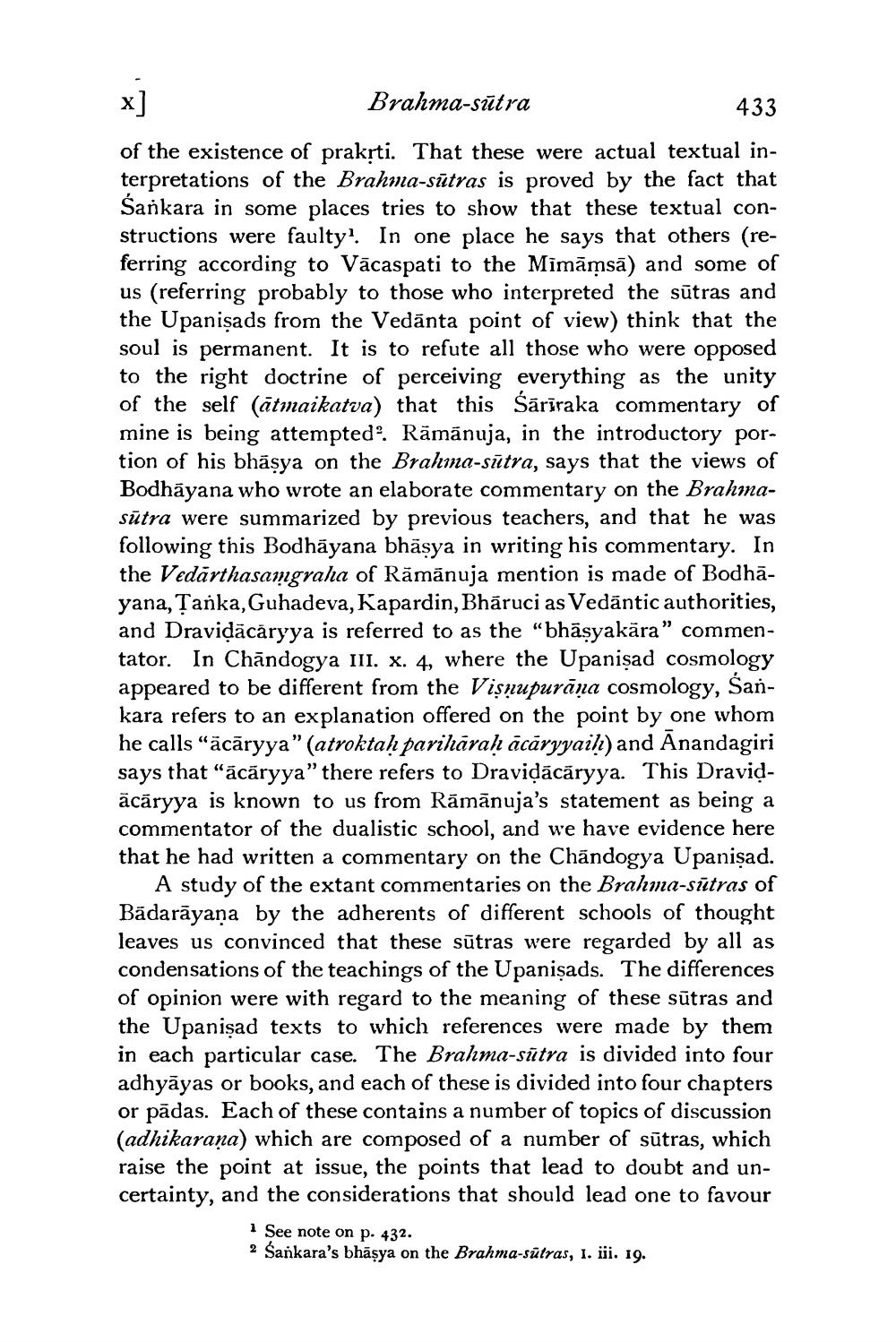________________
Brahma-sútra
433
of the existence of prakrti. That these were actual textual interpretations of the Brahma-sūtras is proved by the fact that Sankara in some places tries to show that these textual constructions were faulty'. In one place he says that others (referring according to Vācaspati to the Mimāmsā) and some of us (referring probably to those who interpreted the sūtras and the Upanişads from the Vedānta point of view) think that the soul is permanent. It is to refute all those who were opposed to the right doctrine of perceiving everything as the unity of the self (ātmaikatva) that this Śārīraka commentary of mine is being attempted. Rāmānuja, in the introductory portion of his bhāsya on the Brahma-sūtra, says that the views of Bodhāyana who wrote an elaborate commentary on the Brahmasūtra were summarized by previous teachers, and that he was following this Bodhāyana bhāsya in writing his commentary. In the Vedārthasaigrala of Rāmānuja mention is made of Bodhāyana, Tanka, Guhadeva, Kapardin, Bhāruci as Vedāntic authorities, and Dravidācāryya is referred to as the “bhāṣyakāra” commentator. In Chāndogya IlI. X. 4, where the Upanişad cosmology appeared to be different from the Vişnupurāņa cosmology, Sankara refers to an explanation offered on the point by one whom he calls "ācāryya" (atroktah parihārah ācāryyail) and Anandagiri says that "ācāryya" there refers to Dravidācāryya. This Dravidācāryya is known to us from Rāmānuja's statement as being a commentator of the dualistic school, and we have evidence here that he had written a commentary on the Chãndogya Upanişad.
A study of the extant commentaries on the Brahma-sūtras of Bādarāyana by the adherents of different schools of thought leaves us convinced that these sūtras were regarded by all as condensations of the teachings of the Upanişads. The differences of opinion were with regard to the meaning of these sūtras and the Upanişad texts to which references were made by them in each particular case. The Brahma-sūtra is divided into four adhyāyas or books, and each of these is divided into four chapters or pādas. Each of these contains a number of topics of discussion (adhikarana) which are composed of a number of sūtras, which raise the point at issue, the points that lead to doubt and uncertainty, and the considerations that should lead one to favour
i See note on p. 432. 2 Sankara's bhāsya on the Brahma-sūtras, 1. iii. 19.




